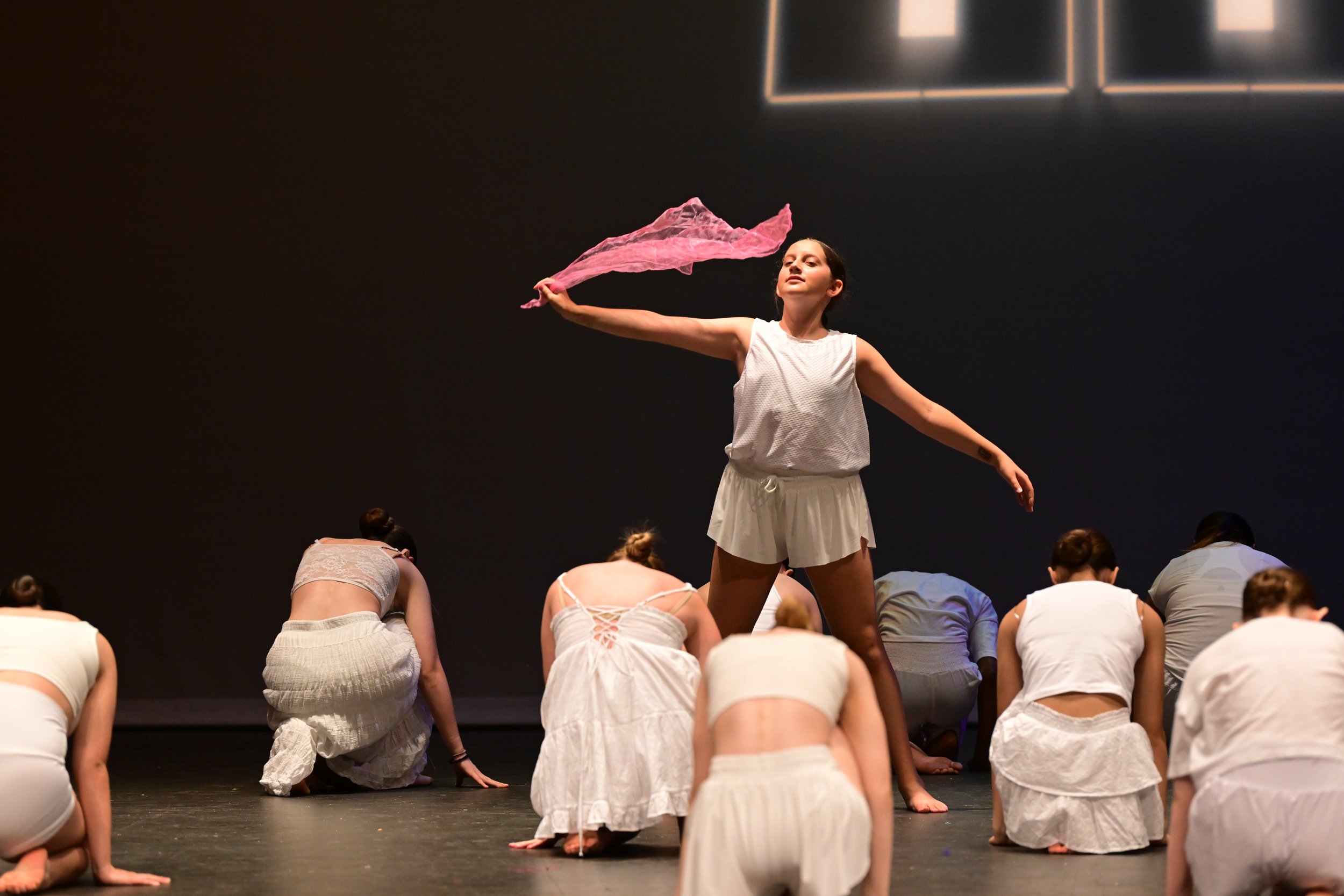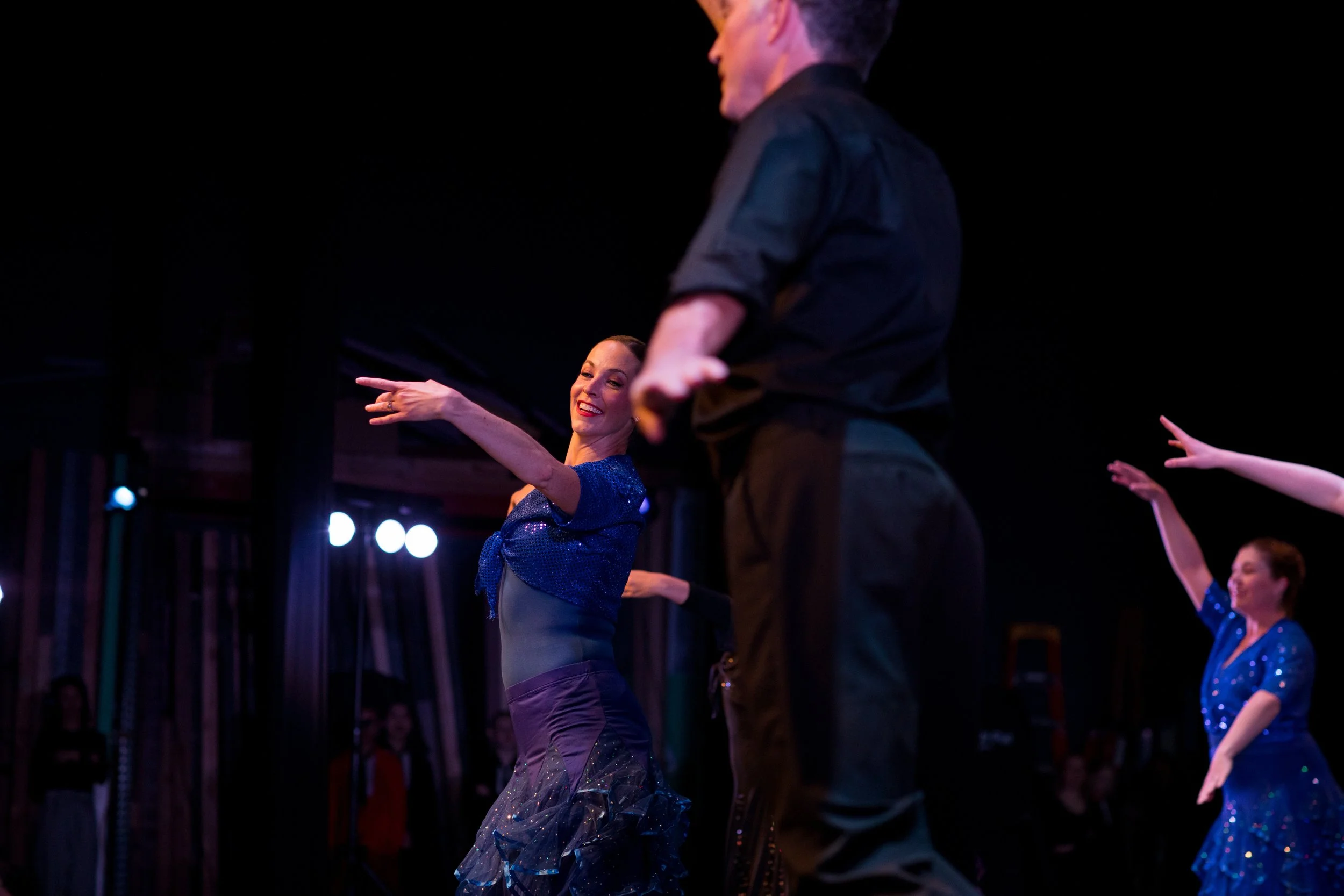Lift Spirits at the Dance Studio!
By exploring how dancing can lift spirits, lower stress, and bring people together, we aim to show why dancing -particularly at your local dance studio- is an important tool for mental and physical wellbeing.
The link between dance and mental health is complex and deeply rooted in the human experience. As an activity that gets people moving and expressing themselves, dancing offers a way to process issues through movement. By exploring how dancing can lift spirits, lower stress, and bring people together, we aim to show why it's an important tool for feeling better.
The Psychological Benefits of Dancing
Stress Reduction
Stress Reduction
In the whirlwind of modern schedules, with the constant pressure of deadlines and commitments, dancing emerges as a valuable stress-reliever. It stimulates the release of endorphins, our body's natural mood boosters, offering a welcome break from the time crunch of daily life.
Incorporating dance into our routines provides a refreshing escape, promoting emotional well-being amidst the hustle and bustle. Incorporating dance into our daily routines enables us to unwind and reconnect with the simple joys of the everyday.
Cultivating Mindfulness and Presence
Cultivating Mindfulness and Presence
Dance invites you into a profound present moment. As you sync with the rhythmic pattern, distractions fade, and tranquility fills their place. It's not just fun; it's a pathway to peace that lasts even after the music stops.
Emotional Awareness
Find emotional awareness at your local dance school
Dancing gives people a unique way to really feel and show their emotions, acting as a powerful tool for those struggling to express what's hard to say. Moving to music allows for a deep exploration and expression of emotions, giving one time and peace to investigate and articulate, building emotional awareness and intelligence at their own pace.
Boosting Cognitive Development in Children (and adults!)
Boosting Cognitive Development in Children (and adults!)
Dancing activates our brains, especially children's, in special ways, boosting their cognitive growth. The simple practice of learning a dance routine, for instance, can have a wide range of benefits including memory retention, concentration, and problem-solving abilities. This brain training has a ripple effect, improving their academic performance and learning potential across different subjects.
Improving Body Image and Self-Perception
Improving Body Image and Self-Perception
Smartphones and social media are everywhere, influencing how we perceive ourselves. We’re constantly shown idealized versions of reality, often without the tools to recognize when our expectations are being distorted.
We all know this, but if we were going to quit Instagram as a society, it probably would have happened already. So what actually helps?
Enter dance.
Not as a place that judges bodies, but as a space that can heal our relationship with them.
At its best, dance teaches us to love, and trust, our bodies for what they can do, not just how they look. It reminds us that every dancer moves differently because every body is unique. Our bodies are our instruments, and no two instruments make music exactly the same way.
When we see and celebrate dancers of all shapes, sizes, and abilities moving with strength, expression, and joy, it gently rewires our expectations of beauty and capability. This is especially powerful for tweens and teens navigating body image pressures.
And beyond the external, dance provides internal support too, from the mood-boosting effects of endorphins to the grounding experience of reconnecting with our own physical selves. Together, these moments help rebuild confidence and create a healthier, more compassionate relationship with our bodies.
Dance doesn’t erase challenges, but it does offer a path toward appreciation, respect, and joy in the body we have, one movement at a time.
Supporting Emotional Regulation and Expression
Supporting Emotional Regulation and Expression
Engaging in dance allows adults and children alike to escape the stresses of everyday life and immerse themselves in the present moment. Through rhythmic movement and self-expression, various types of dance can release tension, alleviate anxiety, and provide a sense of liberation. To quote an excellent New York Times article on Somatic practices during the pantemic, “We’re slowly breaking down physical tension that we might have been carrying for years, [...] Maybe you just have it from the run that you did earlier that day, but maybe this is decades worth of tightness and tension that you’re now consciously releasing.” This was in reference to Yoga, but relates to many kinds of intentional movement.
Social Interaction and Support
Social Interaction and Support
Dancing isn't just about mastering steps; it's about building connections and support systems, working together to learn a complex and beautiful art form, and gaining confidence interacting with large groups. Over the duration of classes, students not only refine their techniques but also gain a platform for social interaction and personal growth, forge friendships, and create a sense of community and belonging.
In many dance classes, particularly those focused on more advanced levels, students may have the chance to play choreographer as well. This experience can be a transformative journey for individuals, providing not only an opportunity to express their creativity but also learning to communicate emotions, narratives, and themes through movement. For some, this may just ignite a love for theatre beyond dance, leading them to explore acting, directing, or other aspects of theatrical production.
Physical Health and Its Impact on Mental Well-Being
Physical Health and Its Impact on Mental Well-Being
There’s a strong connection between how our bodies feel and how our minds feel. A lot of people start dance because they want to get stronger, but dance is so much more than that.
Dancing helps our hearts stay healthy, builds strength, improves flexibility, and gives us energy. But it also helps us on the inside. When we move, stretch, learn new choreography, and express ourselves, it can help clear our minds and brighten our mood.
Dance doesn’t fix every tough feeling, but it does help us feel more confident, more connected to our bodies, and supported by a positive community. Every class gives us a chance to feel good, have fun, and grow, inside and out.
Overcoming Mental Health Challenges
Dance and Depression
Depression is characterized by persistent feelings of sadness, loss of interest or pleasure in activities, and a range of physical and cognitive symptoms. Studies have shown that regular engagement in dance can can serve as a powerful antidote to some of these debilitating symptoms
Anxiety and Stress Management
Anxiety disorders involve persistent and excessive worry that can interfere with daily activities. Dance can address anxiety in several key ways, including stress reduction, improved confidence and social exposure.
Dance as a Form of Therapy
The history of dance as therapy intertwines with the fundamental human experience of using dance as a means of expression, communication, and healing. Dance Movement Therapy (DMT) uses dance as a tool to promote emotional, social, cognitive, and physical integration. This therapy is grounded in the belief that body and mind are interrelated and that changes in movement can lead to changes in the psyche, promoting health and well-being.
It's used across various settings, including hospitals, mental health clinics, schools, and rehabilitation centers, and can be adapted to suit people of all ages. While there are many great practitioners in America, Dance Movement Therapy (DMT) is also not USA centric and practitioners can be found worldwide.
Integrating Dance into Daily Life
Integrating Dance into Daily Life
Integrating dance into your daily life doesn't have to be hard. No matter what kind of dance you think you might be interested in, take the time to explore a range of options. Dance offers an endless array of styles to fall in love with, and you'll be sure to find something that suits your mind, body and schedule perfectly. Whether you're into the elegance of ballet or the energy of street dance, consider making it a serious hobby or sharing what you love by teaching others- fostering gratitude along the way.
Do you have a little one addicted to Tik Tok? While apps aren't always ideal for childhood development, dance videos and TikTok challenges can be a playful and easy way to practice this at home. For parents and those of you who teach, why not shake things up with a big dance party in your living room or classroom?
Why not introduce a special family event by having a dance party every Friday? It's a fantastic tradition for welcoming the weekend with open arms.
Looking for inspiration? Look no further than your browser! GoNoodle is a fun online platform for mac, pc and mobile devices that's perfect for turning screen time into active time, with a wide range of movement and mindfulness videos for kids and adults.
Frequently Asked Questions
What is dance all about?
At its heart, dance is fundamental to human nature. It's a universal language and a fundamental aspect of expression, intertwining physical movement with emotional and social fulfillment. As an art form, dance allows for profound storytelling and emotional connection, as well as a therapeutic and joyful activity that transcends cultural and historical boundaries.
How does dancing affect mental health and well-being?
Dance is a powerful form of creative expression that has numerous benefits for mental health and well-being. It offers a means of communication for individuals, especially children, who may struggle to express their emotions verbally.
How do I get better at dance?
To get better at dancing, practice a lot, try watching others dance and copy what they do, and play around with different styles to find what you like (the Dance Media Calendar is just one of the many fantastic resources for this). Going to workshops and asking for tips can help too. But the easiest and safest way to improve is by joining a great local dance studio, where you'll get help from teachers and make friends who love dancing just as much as you do.










